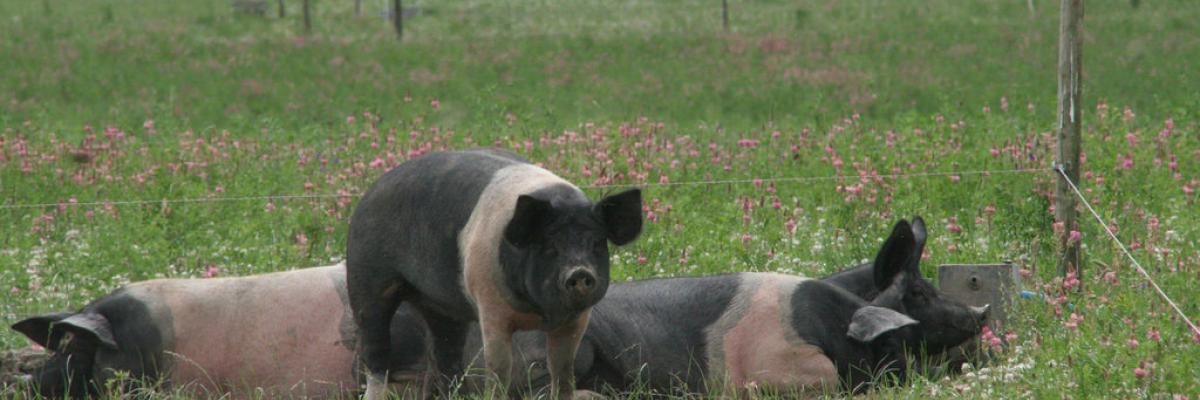

Fulfilling 100% organic pig diets: Feeding roughage and foraging from the range
ICOPP Technical Note 4
Download the PDF
This guide analyses the role roughage and foraging can play in meeting the nutritional needs of pigs.
The 4-page leaflet (Technical Note 4 of a series of 4) is an output of the ‘Improved Contribution of local feed to support 100% Organic feed supply to Pigs and Poultry’ project, which ran from 2011 to 2014.
The guide outlines the benefits of roughage and foraging to the pigs in terms of health and welfare, and to the organic farmer, in terms of reducing feed costs. Potential forage crops and what they can provide in the way of protein are discussed, including legumes, brassicas and herbs such as chicory and dandelion that can be included in leys. Recommendations for suitable silages and their management, harvesting and feeding are given.
The contribution that rooting of items such as vegetation, roots and invertebrates can make to pigs diets is also covered.
- Ranging is important as it encourages the natural omnivorous instinct of pigs to forage for both plant and animal food sources. It can also displace abnormal aggressive behaviours such as tail biting.
- Pastures including lucerne, white and red clover, herbs, and brassicas, can be successfully incorporated into organic pig production.
- Forages can be based on lucerne silage or arable silage and peas and beans can be added to provide additional protein.
- It is recommended that you adopt feeding strategies that:
- Encourage your pigs to take in as much herbage as possible, both on the range or as part of feeding indoors;
- Provide a system that allows adequate time and space for feeding, reducing competition for feed;
- Restrict supplementary feed to a level that encourages your pigs to range; and
- Reduce the particle size of herbage by chopping the silage; this may improve digestion and reduce spillage of the feed material.
- You can allow your pigs free access to grass silage in addition to a basal restricted ration of concentrate feed.
- Grazing and eating silage will expend more energy in pigs so you should adjust live weight gain targets accordingly.
